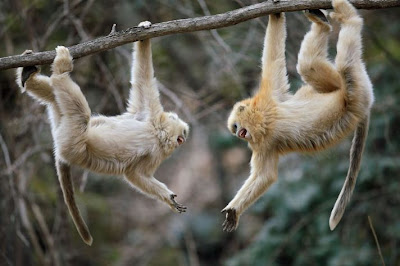The Life of Animals | Golden Snub Nosed Monkey | The change in home range size and location is dependent upon the availability and distribution of food. One of the largest home ranges found covered 40 km2 The golden snub-nosed monkey lives in temperate areas. It is limited to broadleaf deciduous, broadleaf deciduous-mixed Conifer, Conifer forests or
The golden snub-nosed monkey eats (from greatest to least in amount) lichens, young leaves, fruits or seeds, buds, mature leaves, herbs, bark, and flowers. This diet varies from season to season, showing a correlation once again the between food availability and home range. The monkeys' preferred lichen species seem to be Connus controversa, Cerasus discadenia, Salix willichiana, and Malus halliana. The golden snub-nosed monkey Gives birth from March to June
The golden snub-nosed monkey is endangered due to habitat loss. For instance, lichens are the main staple of the monkey's diet and dead trees have the greatest lichen coverage. Unfortunately, dead trees are harvested, thus reducing the quality of the habitat and availability of food. The monkey is a highly selective feeder, so damage to its habitat Seriously Impacts the species.












